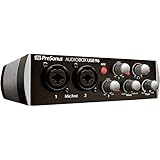I do not use any preamps with my audio interface. I have thought about getting a standalone preamp with tubes, which might give me a different tone when I’m recording vocals.
However, I haven’t found a standalone preamp to be a necessity. My audio interface gives me exactly what I need to get the job done and has a built-in preamplifier.
You do not need a preamp for your audio interface. Audio interfaces have preamps built into them. These preamps are made with high-quality components and do not need to be replaced or bypassed with another preamp. They provide superior recording quality and are more than enough to boost low-level signals to give you a professional-quality recording.
In this article, we will take a look at exactly what a preamp is, what an audio interface is, and the differences between the two. Then we will decide if and when they can be used together and when you should use them.
Finally, I have compiled a review and list of the top 5 audio interfaces to buy (take a look at these picks if you are looking to get an audio interface and if you want to jump straight to them, click here).
Let’s dive right in.
What Is An Audio Interface?
An audio interface is a device that is connected up to your PC or laptop and is used to record, translate and process audio into different signals so your PC or laptop can understand it and can play it back, as well as helping your PC or laptop process and manipulate the audio you are recording.
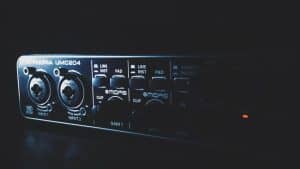
Usually, audio interfaces have preamps built into them. You connect your microphones or instruments via XLR or jack inputs on the device, and the device is connected to your computer via USB or firewire usually.
Audio interfaces come with connections for headphones, main outputs for your studio monitors, and then they could also support other connections such as midi or optical inputs.

Watch Justin Omoi explain what an audio interface is.
What Is A Preamplifier?
A preamplifier is a specifically designed amplifier made to boost a low-level signal to line-level (that is to say, it just makes an audio signal louder). Preamplifiers are different from powered amplifiers:
- Powered amplifiers boost a line-level signal and push that signal through to your loudspeakers.
- Preamplifiers are needed to boost microphone signals.
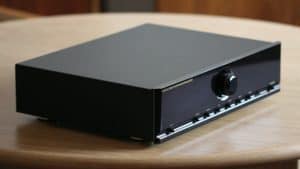
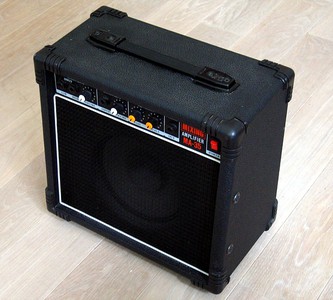
You will find preamps almost everywhere, and some are even designed and sold as separate devices. There are preamps in:
- Audio interfaces
- Mixing desks
- PCs
- Laptops
- Cellphones
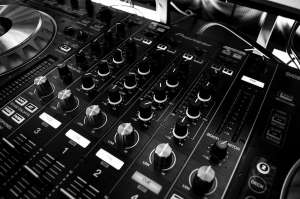
(To learn more, read my article here where I discuss preamplifiers in detail).
Watch Sweetwater explain what an audio amplifier is.
When & Where Do You Use A Preamplifier?
If you are recording in the studio or playing at a live gig, perhaps you need a microphone at a fun day event to make some announcements.
A preamp is used in any situation that requires you to boost the signal of a microphone to line-level, and that will be in any situation that you require a microphone.
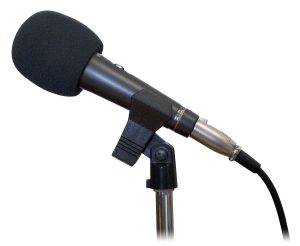
Even some microphones have preamps built into them. A microphone’s audio signal is low due to its design.
A preamplifier is a way to boost the microphone signal to an audible range before we process it and do what we want with it (in the studio or for a live application).
When Do You Use An Audio Interface?
We use an audio interface when we need to record some form of external audio that has to be sent and processed by a PC or laptop. So, for its main purpose, we can say an audio interface is used in the studio to record vocals, instruments, etc.

You are also able to use an audio interface live. This would be applicable, let’s say, when you have a midi device that needs to be connected to your PC. You are a live DJ, and when you play live, you use your midi controller to manipulate and change your audio.
Watch wayne.wav explain when when do you use an audio interface.
What Are The Differences Between A Preamp & An Audio Interface? (Preamp vs Audio Interface)
Well, a preamp is a specifically designed amplifier that boosts a low-level signal (usually from microphones and instruments) to line-level.
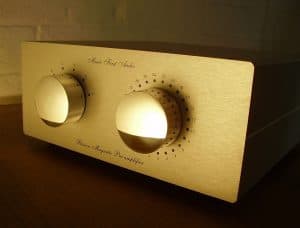
An audio interface is a device which will have a preamp built into it. An audio interface records and processes the audio signal from your microphone into data that your PC or laptop can comprehend and then can process it back.
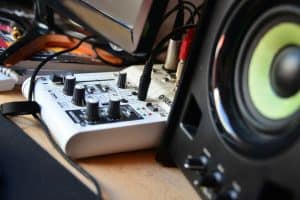
Hence, you can listen to the playback. The device also helps your computer process the signals faster.
The table below explains the differences between a preamp and an audio interface at a glance.
| Preamp | Audio Interface |
|---|---|
| The preamp is the device. | The preamp is just one part of the audio interface (it is built in). |
| Boosts low-level signal from a microphone or instrument to line-level. | Processes & records audio signal from a microphone into data that a computer can understand & back into audio for playback. |
between a preamp and an audio interface.
Watch Dean Divine explain the differences between an audio interface and a preamp is.
Do I Need A Preamp For An Audio Interface?
The short answer is no, and the long answer is it depends on what audio interface you buy and what type of tone (timbre) you are going for when recording.
Some standalone preamps sound different to your audio interface and are built with different components such as tubes, which give a more warm and full sound rather than the bright and happy sound of most modern audio interfaces.
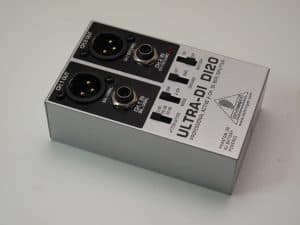
Just remember that all audio interfaces have a preamp built into them. The preamps’ quality will differ, and depending on what sound you are looking to record, you may want to get a standalone preamplifier.
Top 5 Audio Interfaces To Buy
Here’s our picks for the top 5 audio interfaces.
Note: This site is a participant in the affiliate programs of Amazon.com and other websites where these products are sold and we are compensated for referring traffic and business to the respective websites and other companies linked to this post.
Tascam US-16 X 08
This audio interface is one of the larger sound cards in this list. It fits perfectly in a 19inch rack mount. One thing that is loved is that this device has many inputs and outputs for a reasonable price. It has 8 XLR inputs and 8 balanced jack inputs.
This device is compatible with all major operating systems and supports 24-bit recording at 96khz. The connection type is via a USB 2 connection. This card is great and also supports midi connections.
Presonus Audiobox USB 96
This card is tiny and compact and has an outstanding performance record. It is a budget range option from Presonus. However, it is still very popular among beginner home studios.
The device is made out of hard metal, and the build quality is top-notch. It supports midi connections as well as two XLR inputs, which are shared with two jack inputs. The phones and main outputs are located on the back of the device.
All in all, for value for money, you can’t go wrong with this audio interface. One thing to keep in mind it only supports Mac and Windows.
Audient iD14
This audio interface supports 24bit 94khz recording and has a very sleek and modern design. What is cool about this audio interface is that it has a sound meter that other audio interfaces lack. It also sports an optical input that you do not see on other audio interfaces.
The preamp is quite powerful, and due to this, it needs its own separate power supply to drive the preamps built into it. It has two main inputs that share an XLR and jack input. The two main outputs are jack as well, and then the phone’s output can be found on the device’s front.
On the downside, this audio interface has no support for midi and only operates on Mac and Windows. However, this interface is built to high quality and high specifications and is a must-see.
Native Instruments Komplete Audio 2
Native Instruments keeping true to their flagship products and name, have dubbed this audio interface accordingly. The car has two XLR inputs, and that is shared with jack inputs. The interface does support phantom power and is built with a high-quality, robust design.
You have separate mix and volume knobs, which are great, and it also supports phantom power. It supports 24-bit 192khz recording and also has a LED meter for your inputs. It does not, however, support a midi connection.
Focusrite Scarlett 2i2 3rd gen
Focusrite is known for making quality low budget audio interfaces. This audio interface has been and is still very popular and is now in its 3rd generation. It supports 24-bit 192khz recording. One downside to this interface is that it has no midi connection. However, this interface has one of the lowest latencies on the market.
The interface sports two combined XLR and jack inputs for instruments and microphones. It also supports phantom power. The card is connected via USB 3 (it supports a USB C connection), is a plug and play device, and works on all operating systems. It has two jack outputs for the main outputs, and then the headphone jack is positioned on the front of the interface.
Conclusion
In conclusion, we discovered that you do not need a preamp for your audio interface because audio interfaces come with built-in preamplifiers.
Preamplifiers are devices used to boost low-level signals, and you can buy them as a standalone device if you wish.
Modern-day audio interfaces come with modern preamps built-in. Depending on what sound you are looking for, you may want a preamp that is built with different components that will give you a soft, smooth, full, and warm tone.
In any event, you just need to decide what is right for you. Just remember that modern-day audio interfaces have built-in preamps, and they all sound perfectly fine.
If there is static in your audio interface, check out this article to help you solve the problem.
If you think your audio interface might be broken, read this article to find out for sure.
If you are considering using two preamps, read this article first.


